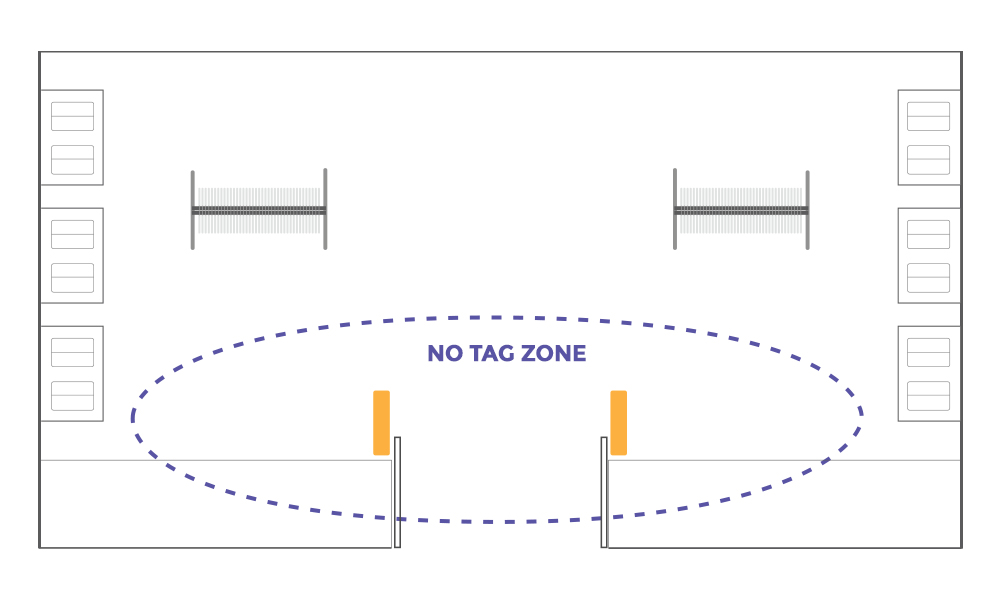Regardless of which Electronic Article Surveillance (EAS) system you use, your staffs should receive proper training in the use of the system.
Staff training ensures the effective operation of your EAS system, while consistently and reliably protecting your products from theft.
Here’s a quick guide to training your staff to use EAS system correctly.
Very Little Maintenance
Once installed, the antenna or pedestal associated with the EAS system requires very little maintenance. When maintenance or repair is required, only qualified technicians can operate according to the manufacturer’s instructions.
System Checks
Your staffs should conduct daily EAS system checks when opening stores.
Usually, these checks take only a few seconds. Make sure to turn on the power outlet of the dock. And the associated indicator will illuminate to indicate that the system is working.
False Alarms
False alarms are one of the biggest threats to the effectiveness of any EAS system. Because they make staffs sensitive to potential theft and also affect the customer experience.
Basically, every alarm in your store should mean that a theft is happening. If it doesn’t, it’s important to understand why.
There are many common and preventable reasons for false alarms, including:
- Failure to properly remove tags or deactivate labels
- Merchandise positioned too close to the antenna
- Improper EAS sensitivity levels
- Tag interference
- System malfunction
The “NO TAG” Area

One of the most important things employees should know is that product positioning can affect your EAS.
In fact, every EAS system has a “no tag” area. This area should have no product display, hangers, LCD screens or even decorations. (Some decorations, especially those with foil or metal have been known to trigger an EAS alarm).
Deactivation and Removal of Tag
As part of daily system checks, staffs should ensure that all deactivators are plugged into a power source and operating correctly. Meanwhile, all staffs should receive thorough training on the removal of tags. And tag detachers should be available at the point of sale.
Tag and Label Positioning
Tag and label positioning play an important role in how quickly and effectively deactivate a label or how easy to remove a security tag.
The ideal location of the security label is close to the bar code while ensuring that the security label does not obscure it. The location allows for quick deactivation and maximum efficiency at the point of sale.
For security tags, their location should not interfere with the customer’s experience of the item but should be placed in a location that is easy for store associates to locate and access the label.
Providing consistent label and tag positioning is beneficial to the operation of the store. While, store management should ensure that there are enough deactivators and detachers at the point of sale.
Tag Pollution
Tag pollution occurs when other retailers did not deactivate the labels or remove the tags properly.
Many advanced EAS antennas have multi-color lights which allow staff to understand whether an alarm is sounding as someone enters or exits the store. This helps determine whether an alarm is issued due to tag pollution or actual theft.
Ensure staffs receive appropriate training on identifying and dealing with tag pollution.
EAS Sensitivity
When EAS system is first installed, a technician will set its sensitivity. This sensitivity allows interference to be filtered out depending on your retail environment.
If false alarms are sounding, the sensitivity level may be an influencing factor. If you think this is the case, please let your EAS supplier know so they can get a technician to the store or even adjust it remotely through the internet.
Summary
Finally, all retail stores should have guidance that your staffs need to do. These guidelines should include label and tag positioning, EAS system contact details, maintenance schedules and more. These are all for the EAS system to operate more efficiently.
For more advice on using the right tags or labels to suit your retail environment, you can contact our friendly EAS staffs here.
